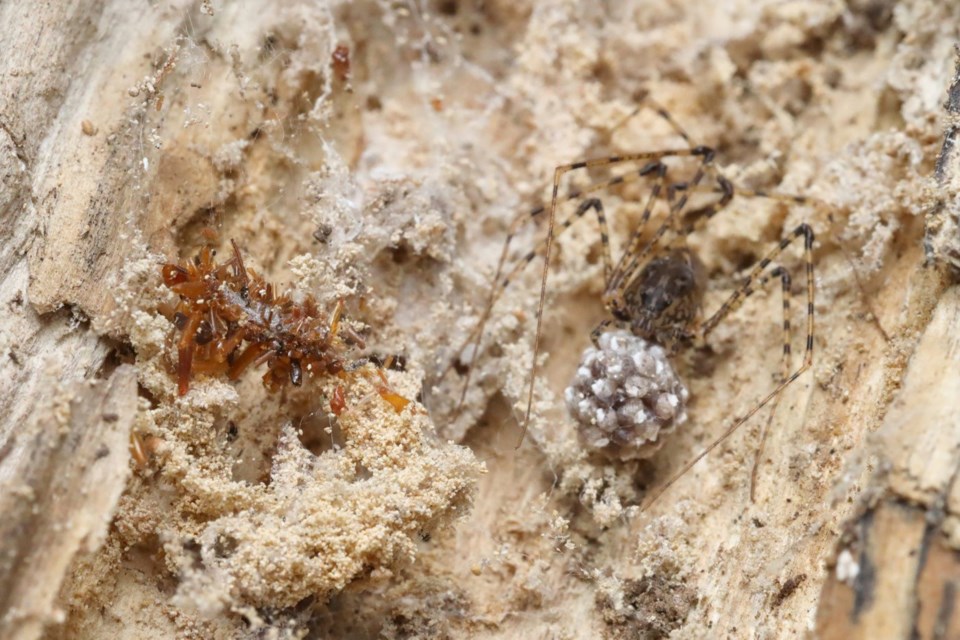NEW YORK (AP) — A new carnivorous caterpillar that wears the remains of its prey has been dubbed the “bone collector.”
The odd insect is only found on the Hawaiian island of Oahu. It creeps along spiderwebs, feeding on trapped insects and decorating its silk case with their body parts.
There are other meat-eating caterpillars that “do lots of crazy things, but this takes the cake,” said study author Dan Rubinoff with the University of Hawaii at Manoa.
Scientists think the case might act as camouflage, allowing the caterpillar to feast on the spider’s ensnared meals without getting caught.
A host of caterpillars native to Hawaii use silk glands to spin protective cases studded with lichen, sand and other materials. This one is the first to use ant heads and fly wings.
“It really is an astonishing type of case,” said Steven Montgomery, an entomology consultant in Hawaii who was not involved with the new study.
Findings were published Thursday in the journal Science. Scientists found just 62 of the carnivorous caterpillars in over 20 years of observing.
Predatory caterpillars are extremely rare and the bone collectors found in Hawaii will even eat each other, researchers said.
The bone collector's origins date back at least 6 million years, making the caterpillars more ancient than the Hawaiian islands themselves. Today, they dwell on an isolated patch of mountain forest alongside invasive species.
“There is really a concern that we need to do better with conservation,” said Rubinoff.
___
The Associated Press Health and Science Department receives support from the Howard Hughes Medical Institute’s Science and Educational Media Group and the Robert Wood Johnson Foundation. The AP is solely responsible for all content.
Adithi Ramakrishnan, The Associated Press




